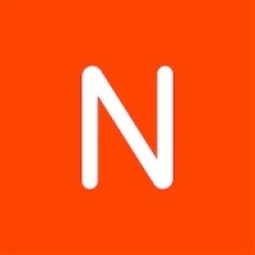公司规模
Mid-size Company
地区
- America
国家
- United States
产品
- PolicyTech®
技术栈
- Policy Management Software
实施规模
- Enterprise-wide Deployment
影响指标
- Productivity Improvements
- Digital Expertise
技术
- 功能应用 - 企业资源规划系统 (ERP)
适用行业
- 医疗保健和医院
适用功能
- 人力资源
- 商业运营
用例
- 监管合规监控
- 人员跟踪与监控
服务
- 系统集成
关于客户
Community Health Alliance is a community health center based in Nevada. The organization believes in a personal approach to health care and provides an extensive range of health care screening and prevention services. These include comprehensive primary care for all ages, pharmacy, dental services (preventive and treatment), management of chronic diseases, outreach to and services for homeless individuals and families, and behavioral health care. With six convenient locations, CHA is the largest primary health care provider to low-income individuals and families in Northern Nevada.
挑战
Community Health Alliance (CHA), a Nevada-based health center, was struggling with manual processes for policy management. The organization needed a robust policy management system to streamline policy distribution and identify potential risks. The existing manual clearance process was inefficient, with policies sitting on desks for months or getting lost. The lack of a robust system was posing a risk to the organization's compliance and overall performance.
解决方案
Mary Wherry, the quality improvement director and compliance officer at CHA, recommended PolicyTech®, a policy management software, to the organization. PolicyTech® helps CHA manage about 250 policies and procedures, making distribution and training more efficient. It also reveals major gaps and risks within the organization. The software offers multiple avenues for policy management and distribution, making it easy for employees to access and review policies. Employees can access PolicyTech through an app on their desktop, in their favorites, on the organization’s intranet - SharePoint. When a new policy is issued, employees also receive an email from PolicyTech that directs them to review and mark that they’ve read and understood the content.
运营影响

Case Study missing?
Start adding your own!
Register with your work email and create a new case study profile for your business.
相关案例.

Case Study
Hospital Inventory Management
The hospital supply chain team is responsible for ensuring that the right medical supplies are readily available to clinicians when and where needed, and to do so in the most efficient manner possible. However, many of the systems and processes in use at the cancer center for supply chain management were not best suited to support these goals. Barcoding technology, a commonly used method for inventory management of medical supplies, is labor intensive, time consuming, does not provide real-time visibility into inventory levels and can be prone to error. Consequently, the lack of accurate and real-time visibility into inventory levels across multiple supply rooms in multiple hospital facilities creates additional inefficiency in the system causing over-ordering, hoarding, and wasted supplies. Other sources of waste and cost were also identified as candidates for improvement. Existing systems and processes did not provide adequate security for high-cost inventory within the hospital, which was another driver of cost. A lack of visibility into expiration dates for supplies resulted in supplies being wasted due to past expiry dates. Storage of supplies was also a key consideration given the location of the cancer center’s facilities in a dense urban setting, where space is always at a premium. In order to address the challenges outlined above, the hospital sought a solution that would provide real-time inventory information with high levels of accuracy, reduce the level of manual effort required and enable data driven decision making to ensure that the right supplies were readily available to clinicians in the right location at the right time.

Case Study
Gas Pipeline Monitoring System for Hospitals
This system integrator focuses on providing centralized gas pipeline monitoring systems for hospitals. The service they provide makes it possible for hospitals to reduce both maintenance and labor costs. Since hospitals may not have an existing network suitable for this type of system, GPRS communication provides an easy and ready-to-use solution for remote, distributed monitoring systems System Requirements - GPRS communication - Seamless connection with SCADA software - Simple, front-end control capability - Expandable I/O channels - Combine AI, DI, and DO channels

Case Study
Driving Digital Transformations for Vitro Diagnostic Medical Devices
Diagnostic devices play a vital role in helping to improve healthcare delivery. In fact, an estimated 60 percent of the world’s medical decisions are made with support from in vitrodiagnostics (IVD) solutions, such as those provided by Roche Diagnostics, an industry leader. As the demand for medical diagnostic services grows rapidly in hospitals and clinics across China, so does the market for IVD solutions. In addition, the typically high cost of these diagnostic devices means that comprehensive post-sales services are needed. Wanteed to improve three portions of thr IVD:1. Remotely monitor and manage IVD devices as fixed assets.2. Optimizing device availability with predictive maintenance.3. Recommending the best IVD solution for a customer’s needs.

Case Study
HaemoCloud Global Blood Management System
1) Deliver a connected digital product system to protect and increase the differentiated value of Haemonetics blood and plasma solutions. 2) Improve patient outcomes by increasing the efficiency of blood supply flows. 3) Navigate and satisfy a complex web of global regulatory compliance requirements. 4) Reduce costly and labor-intensive maintenance procedures.

Case Study
Cloud-based healthcare solution for Royal Philips
Royal Philips wanted to launch its cloud-based healthcare solution HealthSuite Digital Platform in China to deliver services to help cope with challenges related to urbanization and population growth. Philips wanted to achieve this goal by combining mobile, cloud computing and big data technologies. To bring this platform and product to market, Philips required cloud computing and local technical service capabilities in China, in addition to a flexible IT infrastructure that could handle user requests.








